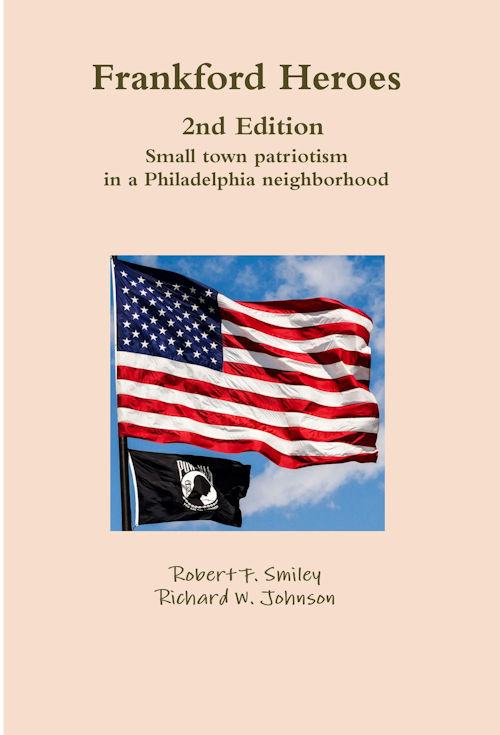Continuation of Lyle (Corky) Larkin remembers:
Block Parties
Another of the many things I have found to be unique to Philly were the “Block Parties.” During the warm months you would find police barricades at either end of a given block, prohibiting any traffic. Usually on Saturday morning the inhabitants of this block would get together and start setting up tables in the middle of the street, complete with “oil cloth” table covers. (Mostly the white and red checkered kind.) Everyone would participate, bringing the “Specialty of the House” to his or her own table. There were more varieties of deviled eggs than I knew existed, backed beans, luncheon spreads, homemade pickles, fresh baked bread and some of the yummiest deserts I ever saw. There was either live music or someone would supply their “hi-fi” for playing records, but you could almost always count on somebody in that block being able to play some kind of instrument, including the “Washtub & Scrub-Board”. Sometime the block party would last through till Sunday evening.
Wash Day
Behind the row homes, were alleyways. Which was a narrow path that separated the back yards, just wide enough for a horse and wagon to go through. The curbs had a curved steel rail to protect it from the wagon wheels. For us kids, these alleys where a source of magic, for many of them interconnected and each turn had the promise of a new adventure. Walking down these alleys you would always see women hanging out their wash in the back yard. Mondays seemed to be the designated day for washing clothes. Women took great pride in hanging their wash out to show everyone how bright and white they got their laundry. There was almost an unspoken competition going on with the neighbors. You could be sure the whites passed a rigid inspection before they were hung up. I remember a bluing process that was used to make them look even whiter using ‘Unity Frankford Bluing’. We had a “Ringer” type washing machine down in the basement alongside a double compartment cement laundry tub, which sat on a metal frame. This tub had to weigh over two hundred pounds I remember some men broke it up with sledgehammers when they removed it. The washer was set next to these tubs so the water that was wrung out of the clothes as they passed through the hard wringers would go down the drain and not back into the washing machine. The agitator would go up and down instead of in a circular motion like the ones of today. The was a big red button on top of the wringers which was an emergency release in case you got your fingers too close while you were hand feeding the clothes through and the wringers caught your hand. For the toughest dirtiest clothes, there was always the “washboard.” This was not the fanciest of devices, it was simply a two foot by three foot wooden frame with a piece of galvanized ribbed metal that you placed upright inside of a tub and vigorously rubbed the piece of laundry up and down on until it came clean. For many, this was the only source of washing! It seemed like just one step above beating your laundry on rocks down at the river. There was no such thing as a dryer, so everything was hung out in the back yard to dry. Sometime in the winter the clothes froze on the line, so they had to be hung in the basement. The clothesline had to be changed often due to being out in the weather, it would get dirty and leave marks on the clothes. Clothes poles were used to prop up the lines and keep them from sagging in case there were too many heavy things on the line. Solid cast irons were used to make razor sharp creases in the shirts. We had a gas stove in the kitchen where my grandmother would heat the irons. She had several of these so while she was using one, the other was getting hot on the stove. The handles were removable so it was easy to switch those heavy irons once they cooled down.
Magic Radio
I can recall many Sunday nights, sitting in the living room on the floor and staring at the big RCA console radio. There was a small semi circle shaped dial in the middle towards the top with a yellow light in it. We would all sit there watching the radio listening to programs such as Jack Armstrong, Inner Sanctum, The Green Hornet, The Shadow, Charlie McCarthy, Burns and Allen, Amos and Andy, Sky King and finally, Walter Winchell with the news. This man could really sell the news; he made everything sound even more important than it was! “Good evening Mr. and Mrs. America and all the ships at sea. Let’s go to press.” That‟s how he would begin each program. I could go on and on with the list of programs that kept us glued to that set for hours each week. These were good times. These were family times. These were the times when you used your imagination to see things. These were the times before television.
To be continued…




